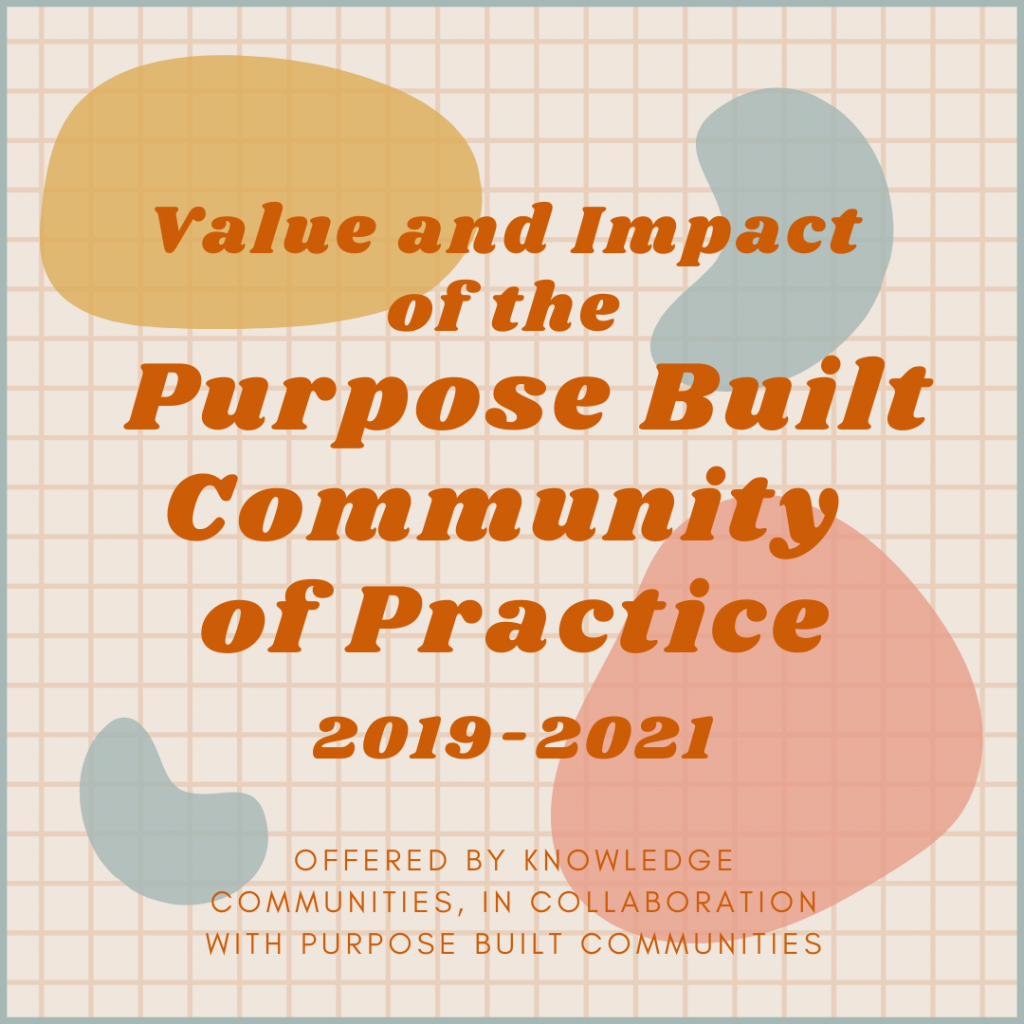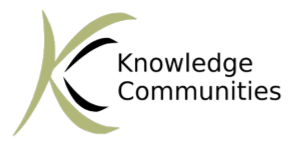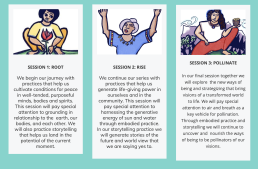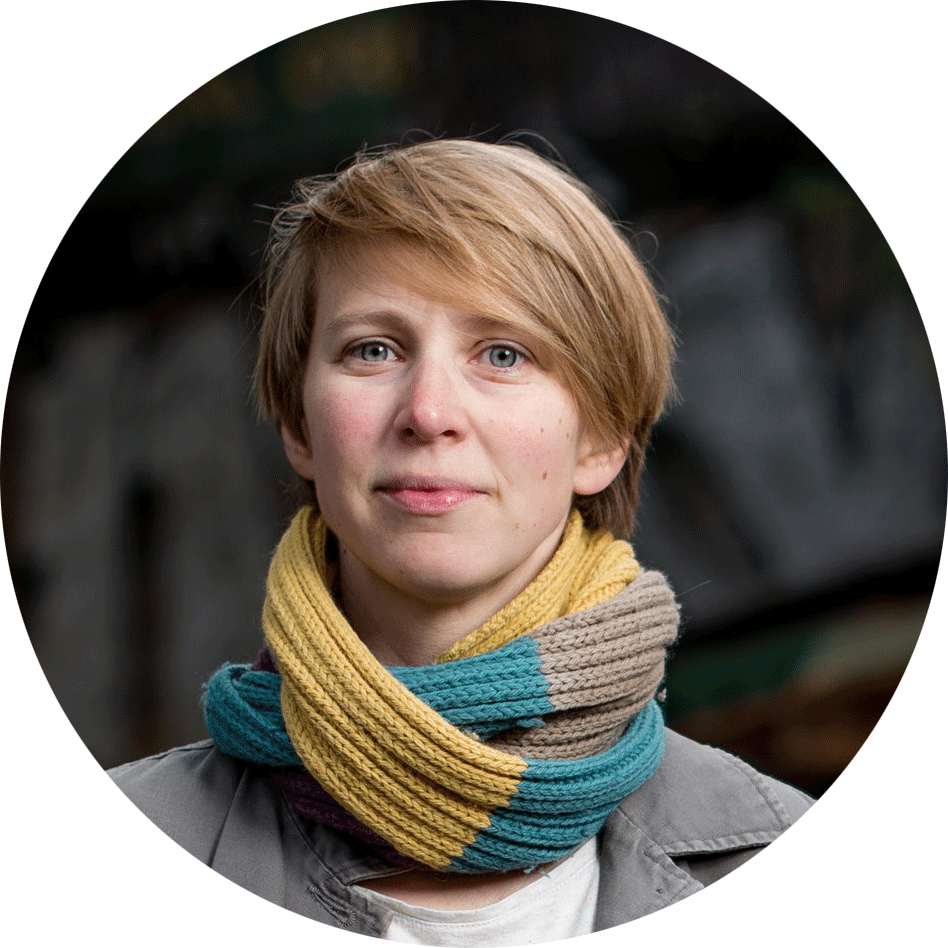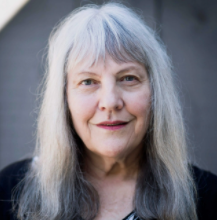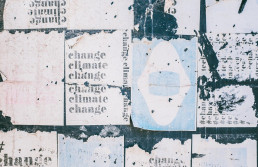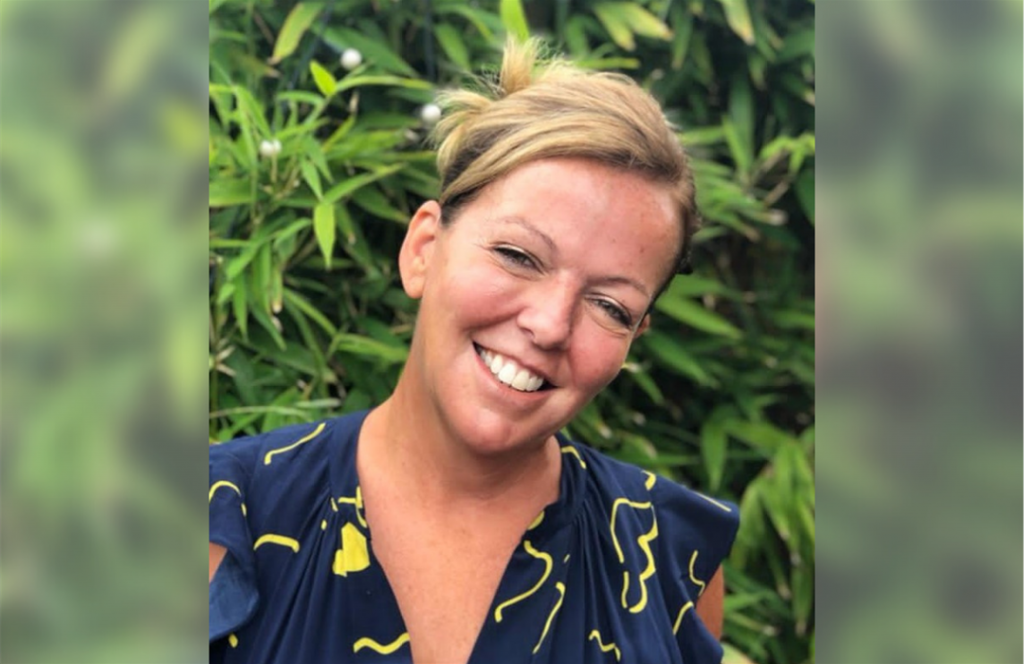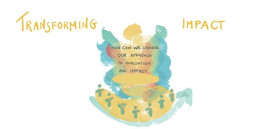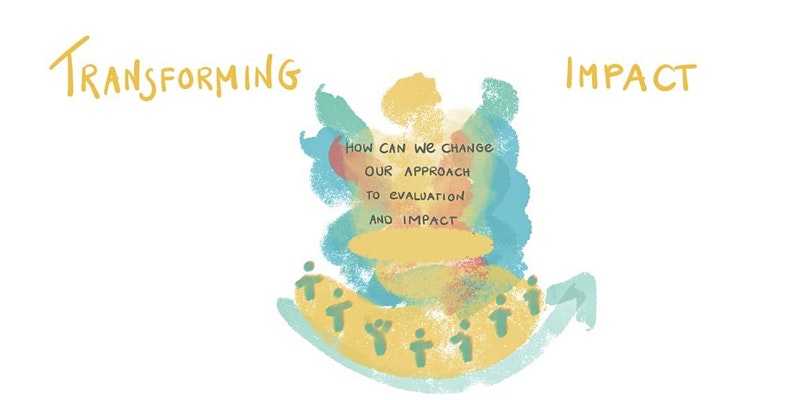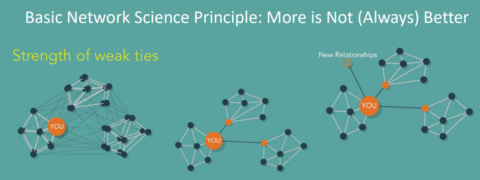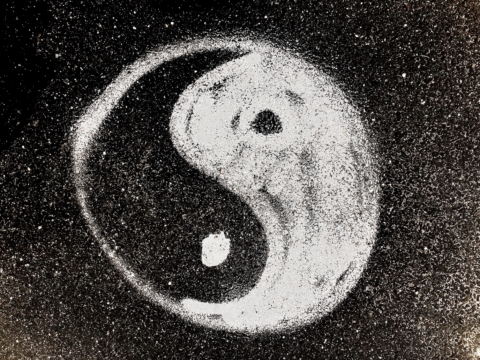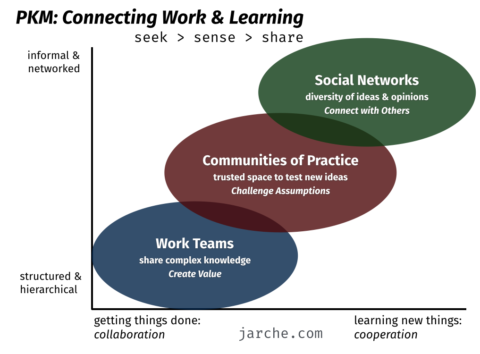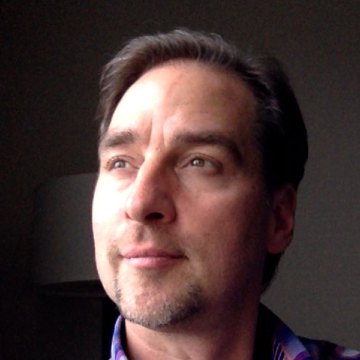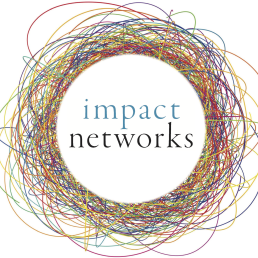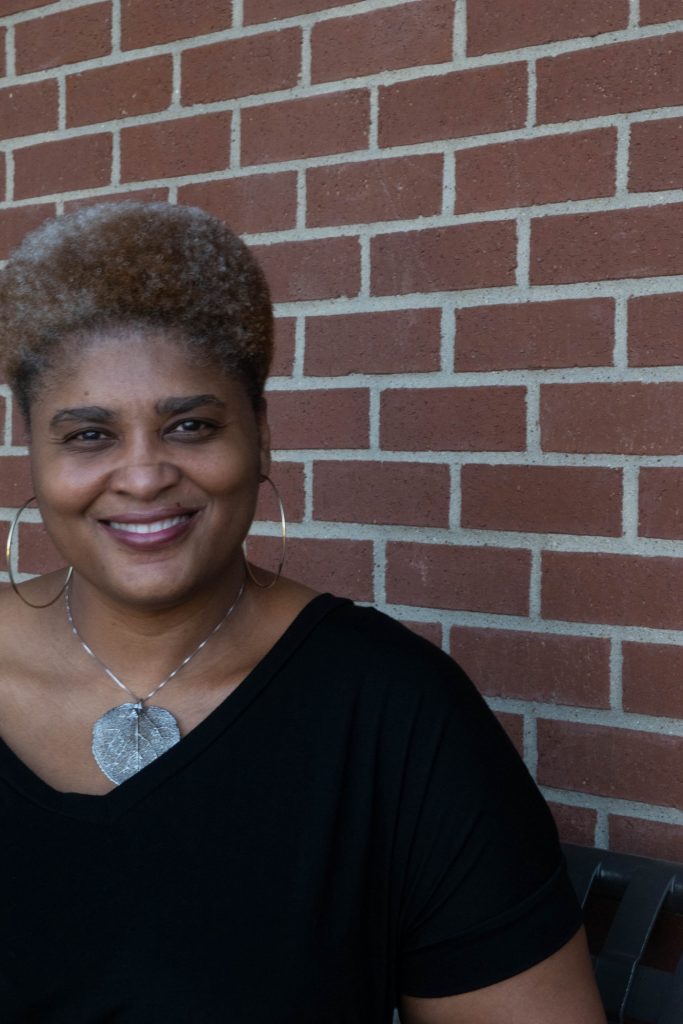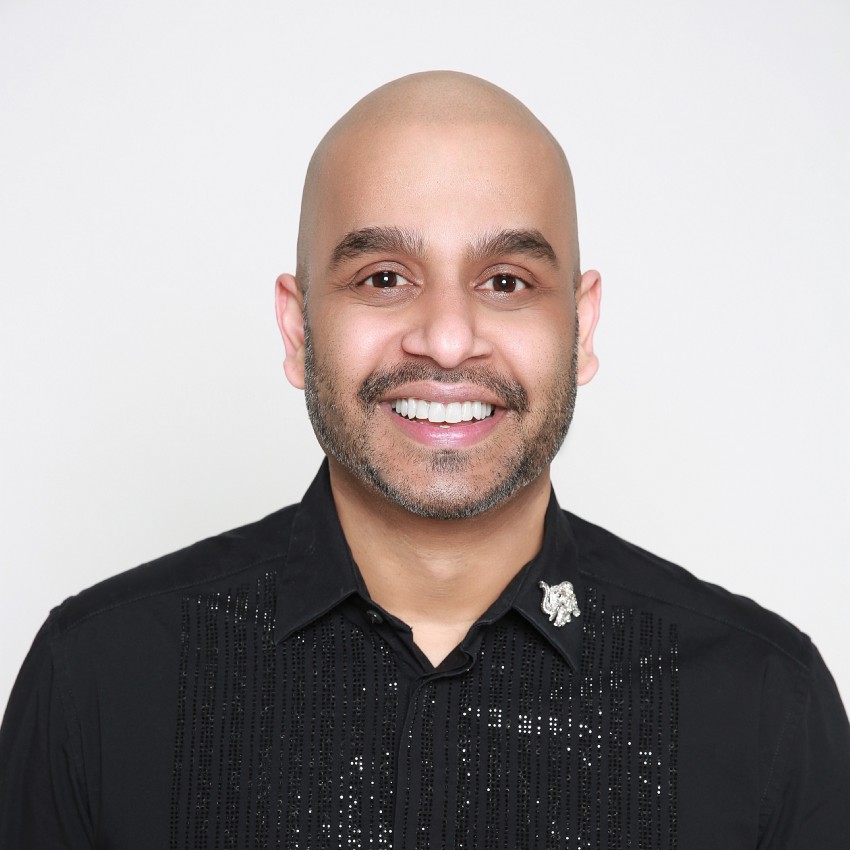Value and Impact of the Purpose Built Community of Practice
Knowledge Communities, in collaboration with Purpose Built Communities, have released a white paper (that you can download below) telling the story of Purpose Built’s successful and compelling journey to adopt and implement a Community of Practice (CoP) strategy to support neighborhood revitalization and racial equity. Specifically, the paper describes the Purpose Built CoP startup process, the status of the Purpose Built CoP as of early 2021 and success factors to date. Finally, the paper contains an appendix of tips for practitioners who support and manage CoPs and networks.
- Read about how the Purpose Built Community of Practice (PB CoP) successfully supported a network of change makers across the country during COVID and continues to support them on an ongoing basis today.
- Learn some practical strategies you might want to adopt as you build a community of practice.
- Understand why the PB CoP exemplifies best practices from which many can learn.
Communities of Practice bring together professionals who share a common set of challenges (e.g., Purpose Built Network leaders focused on place-based community development) on an ongoing basis to collaboratively solve problems and learn from each other.
Article Summary
Purpose Built Communities brings together Network Members — leaders and staff of organizations working to improve equity and opportunity in neighborhoods across the country — in a networked Community of Practice (CoP) structure. Knowledge sharing and collaboration helps local leaders in the Network tackle the complex challenge of intergenerational poverty to achieve racial equity, improved health outcomes and upward mobility for residents.
In 2019, with the generous support of the Robert Wood Johnson Foundation, Purpose Built Communities began moving from a hub-and-spokes structure (with Purpose Built serving as the hub), to a Community of Practice, also known as a networked model.
The Purpose Built Community of Practice stimulates problem recognition, and the creation, exchange and application of innovations to serve place-based neighborhood revitalization that moves people out of poverty.
The CoP’s structure and interactions help Network Members:
- Build stronger relationships with supportive peers
- Accelerate knowledge sharing
- Respond rapidly and flexibly to changes in circumstances
- Shorten learning curves to gain skills and expertise fundamental to Network Member excellence
- Successfully implement the Purpose Built Communities model
- Make informed decisions that create stronger outcomes
For more information, read the full white paper, “Value and Impact of the Purpose Built Community of Practice: 2019-2021″
Access the paper by downloading the resource at Network Weaver HERE or at Knowledge Communities's website HERE.
The mission of Knowledge Communities is to create environments that optimize:
- Trust building
- Collaboration
- Synergy
- Knowledge Sharing
- Generative Behaviors
- Harness the productive dimensions of power and competition in the service of improving lives and bettering the world we live in.
Originally published at Knowledge Communities
Waging Peace with Fierce Love : a 3-Part Workshop Series for feminist changemakers
What will it take to transform conflict, to ensure our movement building and changemaking is fueled by fierce love over fear? How can we resource ourselves and each other with transformative, life-giving power?
This three part workshop series is an opportunity for feminist changemakers to explore how to root, rise, and pollinate the new ways of being necessary to wage peace, transform conflict, and strategically bring to life our visions for a transformed world.
The three sessions are part of the whole, and are intended build on each other.

These sessions will create a welcoming and grounding embodied practice space to help changemakers root in and remember our personal and collective purpose, identify habits to interrupt, and sustain generative power.
They build on the kitchen-table chat and embodied practice session we held earlier in 2021 with feminist changemakers from around the globe, Waging Peace with Fierce Love.
Recordings of the sessions will be available
Wednesdays in 2022 - January 26 & Feb 2 & 9
For more information and to register, CLICK HERE
visit rootrisepollinate.us and ig @rootrisepollinate to stay tuned?
Transforming Impact : how evaluation and impact are shifting
Given the complexity and depth of the world’s problems, evaluation theories, practices and processes are shifting to better respond to that complexity. The argument goes something like this: problems in our world are increasingly complex, current approaches that fund individual projects (requiring clear outcomes, and evaluating progress towards those outcomes) have actually inhibited the kind of innovation and transformation needed to completely shift the many interrelated systems that make up our world. This means concepts such as evaluation and assessment of impact need to shift as well.
On November 10th, a panel of 8 great minds had a dialogue on the ways that impact measurement and evaluation are shifting.
The panelists were.
- June Holley, Network Weaver
- Glenn Page, SustainaMetrix
- Motaz Attalla, Garfield Foundation
- Charles Kojo Vandyck, West Africa Civil Society Institute
- Gurpreet Singh, Skoll Foundation
- Mark Cabaj, From Here to There
- Liz Weaver, Tamarack Institute
- Habiba Nabatu, Lankelly Chase Foundation
Below is a link to a video the dialogue:
Key takeaways from the session were:
Some of the key themes
- Insights and breakthroughs come from investing proper time in reflection and learning, which we're not currently doing.
- Power dynamics are embedded into evaluation systems through inflexible questions which signal a lack of trust. The process needs to be more participatory since it oftentimes stands in contradiction to an equity approach.
- We need to continually ask: is this process community owned and run?
- We need to make public the wild assumptions that sit behind cause and effect paradigms.
- Though conversations are becoming more progressive, the practices don't yet reflect this.
Beacons of good practice
- Having a vision as a north star
- Slashing indicators as key questions in application forms
- Prioritising learning and quantifying instead of impact measurement
- Shifting the work to the funder, eg. taking responsiblity of finding out what grantees are doing by what's been reported online
- Decentralizing impact analysis & decision-making through lean and frequent mechanisms
- Making data openly available so people can review and assess as they please
Some nice quotes
- "Indicators will shift because life happens" (Motaz, Garfield Foundation)
- "Learning is how we shift, adapt and change in real time" (Liz, Tamarack Institute)
- "I've never seen people read M&E reports and be inspired...we need to use stories" (Charles, WACSI)
- “We need to get rid of ‘zombie’ practices – those that are dead but still being used” (Mark, From Here to There)
- "The best learning happens in learning communities" (June, Network Weaver)
We'd also like to share a chart that summarizes how evaluation and impact assessment are shifting. It's a work in progress so please feel free to add comments and suggestions using the comment feature.
If you're interested in being engaged in further impact initiatives with us please fill in this 60 second survey.
If you'd like to keep the links to the video and chart offerings on file, download the free resource HERE.
Governance – the overlooked route to transformation: How can we best organise for change?
What are the current governance approaches and ways of organising that are being used in attempts to create systems change? What would more systemic governance approaches for our work look/feel like and how might we transition to these?
Part one in a series of four exploring the future of how we govern and organise. Co-written by Sean Andrew, Louise Armstrong and Anna Birney
“Every attempt to write a new human story converges upon just one mundane, heartbreaking problem: How shall we come together, work together, create together? How shall we organise?”
Nilsson, Paddock and Temmink, 2021, Changing the way we change the world (Draft manuscript)
At the heart of change is how we think, relate and act. While these ways of being weave in and throughout our ordinary everyday experiences, they are not always given the intention and continuous attention they need. We believe how we relate, work together, and organise are cornerstones of change making. How we find ways to bring awareness to these elements really matters, and is easier said than done. They need just as much attention as the structural shifts that are required in the coming decade.
With this in mind, we are exploring governance as the place of untapped potential that can enable transformation today and into the future.
We’re defining governance as: The forms, structures and social processes that people and institutions use to create and shape their collective activities.
As such, we, and many others we’re working with and are inspired by (Beyond the Rules, The Hum, Reinventing Organizations, Going Horizontal, Practical Governance, Organization Unbound, Lankelly Chase, Shared Assets, Patterns for Change, Leadermorphosis and Barefoot Guide Connection, to name a few) are calling for governance approaches that reflect systemic principles that are suited for complex adaptive systems. Many of those we’ve listed are experimenting with elements of this, each adapting these to their contexts like Transition Movement and their shared governance approach, or CIVIC SQUARE, who are applying their mission and values into the organisational structures and processes – from how they do recruitment through to how they do financial planning.
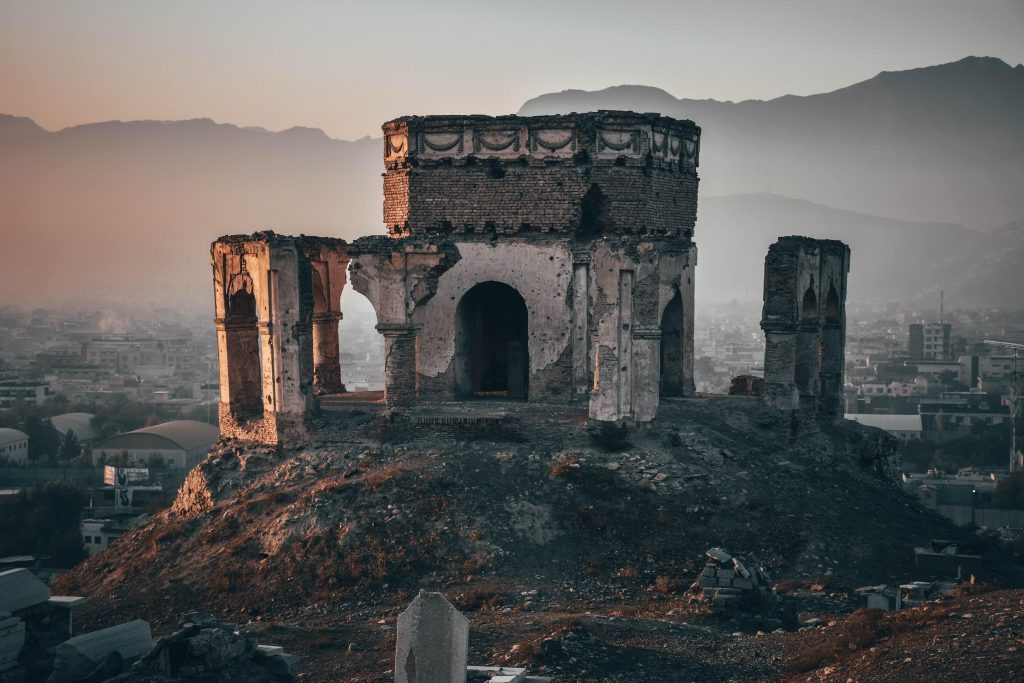
We’re increasingly noticing internally, through our own organisational experience at Forum for the Future, and through our systems change strategy, collaboration and coaching work with others, that many of us subscribe to dominant forms of governance that are designed for a complicated, not complex world. We’ve noticed that sometimes, without intention, our own patterns of organising and those of many of our partners are perpetuating the structures, dynamics and patterns we are trying to shift. For example, we take centralised or hierarchical decision making approaches even though we want to enable greater ownership over a project which can come through taking advice-based decision making approaches where those closest to the challenge are part of the process.
Systemic governance on the other hand enables self-organisation (how a group of people organises their time, attention and resources in ways that meet the urgent necessity of the moment). It cultivates the emergent practices (and enables new system patterns) that help us align to regenerative and distributive approaches that better mimic our living systems.
Our inquiry into governance
After exploring new forms of organising, over the last 18 months at Forum we have been exploring two governance inquiry questions:
- What are the current governance approaches and ways of organising that are being used in attempts to create systems change?
- What would more systemic governance approaches for our work look/feel like and how might we transition to these?
To respond to these questions, we’ve been reflecting on our own organisational life while also learning from current and past collaborations we’ve convened or participated in over the past decade.
What is governance?
So how do people understand governance in their context? Through our inquiry we found that peoples’ understanding and expression of governance varied and was even sometimes quite vague. While governance meant different things to people, depending on their role or context, the people we spoke to talked about it in a few distinct ways, the ‘elements of governance’.
Elements of systemic governance
Systemic governance has both soft and hard elements.
Part of the reason why we tend to think of governance as a fixed process is that we often associate it with a few rigid components. From this exploration we realised that governance is in fact made up of a whole spectrum of elements, which while distinct, together create a unique governance context you may find yourself within, be that in an organisation, a movement, a collaborative endeavour, a community or really any place where people come together to organise something. By naming a spectrum of elements it expands the view of what governance is and how these parts form a tapestry.
We’ve created the figure 8 (below) as a summary of what we’ve heard, recognising that one way of distinguishing these elements is looking at the ‘hard’ or ‘soft’ elements. While the hard and soft elements can sometimes feel in tension with each other – they are in fact interdependent and together they form part of the governance landscape we have to traverse together;

In reality – we recognise these elements can be interchangeably hard/soft and are in symbiosis. Some will be visible and explicit and others invisible and implicit, depending on the context and people’s experience. For example, a “hard” element such as finance might actually be very hidden in an organisation without financial transparency or a “soft” element such as communication and transparency might be experienced overtly as lacking and be a visible gap in ways of working.
Innovating the hard and visible elements of governance
Most of the governance approaches we explored focused on the hard and often more visible, explicit structural elements of the organisation. These seemingly felt easier to figure out with clear problem > solution tactics. For these hard, visible structural elements of governance, people talked about inherited “best practices” that often took the form of compliance protocols. When working systemically, challenges can come when the ‘hard’ or ‘visible’ parts of governance are too rigid and fixed. We found that people working on complex challenges were often bound by these constraints and were yearning for ways to disrupt, reimagine, and innovate these ‘hard’ elements.
One hypothesis we are working with is that the hard stuff (the what) can be a transitory tool and a trojan horse for prioritising the soft stuff (the how).
The soft, invisible elements are the hardest part of governance to shift
The “soft” elements of governance are the implicit less formal cultural components of how people relate and organise. It’s often less tangible and thus harder to shift. Systemic governance is a constant practice of probing, sensing and responding to the dynamic nature of these elements in changing contexts. We found that these elements are too often submerged and therefore if we want to develop resilient adaptable governance approaches we need to bring to the surface and made explicit the soft cultural elements. While these elements are often deprioritised as they are unseen, they are still aspects of governance that materially impact the lived experience of people working within different organising forms.
Why is it so hard to work with the softer issues? The nature and quality of our relationships is the foundation of any governance. Questioning, challenging and reconfiguring established relationships is hard. It can take difficult conversations and processes to bring in different perspectives and overcome unhealthy power dynamics. Bringing self-awareness, paying attention to relational dynamics, creating space to listen and honestly share and transparent communications are the starting points.
Reframing governance as a journey
We heard people thinking about governance as putting structures and processes in place and thinking the rest will follow. Any of the words and connotations people mentioned pointed to governance as something that is fixed and hard, a static thing you set up on a one-off basis when in fact governance approaches are alive, can be enabling and need to be seen as a constantly evolving journey. We’ll explore some more of these governance myths in the next blog piece.
Sign up for the newsletter to get the next blog piece directly to your inbox.
Governance as an overlooked intervention or leverage point for change
These elements of governance play out in all of the many ways when we come together – be that in a multi stakeholder collaboration, across teams or functions in a large organisations, in communities, within networks or distributed movements. Governance is central to any form of organising or organisation creating change. We need to support others to imagine and implement new governance approaches that demonstrate and model how we can operate systemically, as a fractal of the change we are cultivating in the world.
What next?
We offer this figure 8 framework as a way to open up a different conversation about governance and acknowledge it is just one framing. We’d love to know if this resonates with your experience and how the challenges of hard and soft elements play out for you?
We’ll be writing two more pieces in this series. One to explore some of the governance myths we’ve been uncovering through our inquiry (e.g. governance helps us control things). And a second to dig deeper into some of the core systemic governance elements you might start to pay attention to now as critical yeast to influence your organisational practices and experience.
In 2021, we’re starting to explore some of these ideas with fellow travellers who have similar experiences in their context. If these ideas resonate with you or you want explore them more – get in touch with Sean s.andrew@forumforthefuture.org or Louise l.armstrong@forumforthefuture.org
Background context
At Forum for the Future, our governance inquiry is one of our three live inquiries (power, governance, regenerative) we’ve been exploring over the last 18months. This inquiry approach supports our aspiration to be a learning organisation that keeps questioning the assumptions nested in our purpose and supporting structures, processes and practices. Our belief is that these inquiries are helping us continuously become a system-changing organisation that is using our own experience as a site of learning, and as an expression of the change work we’re trying to do in the world. This inquiry has been greatly inspired and supported by those in the field who have been, and are, experimenting with ideas and approaches to governance. This piece is part of our ongoing Future of Sustainability series. In 2021 we’re exploring the narratives and practical interventions needed for transformation in the coming decade.
Read next:
- Exploring transformational governance together Governance can be transformational. When we set our sights on changing the world, we also know that governing well goes beyond preparing our own organisation, network or movement for the future. How do move beyond tweaking the way things currently work and apply governance to transform the ‘systems’ that operate in our society that maintain injustice, oppression and inequality (such as race, patriarchy and class)? (PART 2/4)
- Reimagining governance myths Part three in a series of four exploring the future of how we govern and organise. This piece looks at how people think governance happens today and challenge five commonly held governance myths. (PART 3/4)
- The governance flywheel In this final installment of our series on governance, we introduce the “governance flywheel”1 which highlights three fundamental linked areas that if they are deliberately seeded and nurtured, individually and together, can create the momentum needed to cultivate and grow healthy governance systems. (PART 4/4)
Originally published at Forum for the Future
An enabling, empathetic and courageous leader. I questions and challenges the way things are done, models what is possible and enable others to do that too. Sees potential and nurtures it in people and ideas. Living change while knowing how to strike how to strike the balance between adventure, rest, work and care and nurturing.
For another way of thinking about governance alternatives see Resonance Network's post and media toolkit : THIS IS HOW #WEGOVERN
Explicitly Building a Periphery for Your Network
A number of my writings have outlined strategies for weaving a network, but none have detailed the importance of and processes involved in building a network periphery. This blog post will guide you, step-by-step, through a process you can use with participants in your network.
First a definition. A periphery consists of people who are not part of the everyday operations of your network. Usually only a few people at most have connections to individuals in your network’s periphery.
In the drawing below, the grey dots around the outside of the network represent the periphery.
Why is spending time building a periphery so important?[ap_spacing spacing_height="10px"]
- A periphery can provide pathways for new people to easily join your network, thus enabling your efforts to continually expand, reach new people and increase your impact. This is especially important if you have noticed that your network is disproportionately white or western, and your network wants to become more inclusive and welcoming to all.
- A periphery can connect you to other networks.
- Connections to other networks can increase your efforts to integrate and aggregate with the efforts of other networks working on the same or similar systems. For example, if you are a network working on climate change you may want to connect with other climate change networks who are trying to get new policy enacted.
- A connection to networks I call provocative networks can enable people in your network to examine their assumptions and take off blinders engendered by dominance culture. For example, many networks are connecting to anti-racism networks to help them examine and dismantle racism within their network.
- A connection to networks working on other systems can help your network stay in touch with the big picture and how other systems are impacting the system you are focusing on.
- A periphery can connect your network with others working on building the ecosystem of support needed for transformative networks:
- communications ecosystems and protocols for sharing learnings
- pools of resources restructured to support self-organizing
- pools of facilitators (network activators and catalysts, network weavers, learning weavers, culture workers, etc) that can be accessed by all networks
- learning communities
- shared resources such as handbooks, research, etc and a system for curating and creating new knowledge. [ap_spacing spacing_height="7px"] International co-design groups are forming around these ecosystem elements, with people from several dozen networks participating in the development processes, though the resultant support ecosystem will be accessible by all networks. (Let me know if you are interested in working on this.)
- A periphery can help your network and network participants access expertise. Whether it’s organizational expertise, expertise on running an effective network, or expertise connected to your network’s purpose, your network can benefit from having connections to experts who, in many cases, might be willing to provide pro bono or lower cost services to the network or its participants.
- A periphery can help you and your network participants access new resources. Yes, we all want connections to more funders who will support our work, but there are also other kinds of resources that our networks and organizations might use that are only a step away: meeting or work space (assuming the pandemic ever ends), food, spaces for retreats, volunteers, etc.
How to assess and enhance your network’s periphery
Step 1. Inform and Recruit
- Share this blog post with as many people in your network as possible, explaining why you think this activity is important to your network and then ask people if they are interested in being part of one or two sessions to expand the network’s periphery. Be sure to explain how much time this might involve.
- Do a short virtual session on the topic ending with a call for volunteers.
Step 2. Convene
- Find several people with strong facilitation skills to help you plan and implement the session.
- Set and time and date and then send out an invitation to everyone in the network. (Using breakout sessions you should be able to easily handle many many participants so don’t worry about a huge response!). You might want to do targeted recruitment for people who have strong personal networks in each of the five areas listed above.
- Decide which of the five aspects of peripheries listed above is the highest priority for your network, as each one will take an hour or two to work on. You may decide to meet once a month for five months to work on all of them.
Step 3. The Session Process
Let’s look at the first two aspects. You can use similar processes for the rest. The key is to use a whiteboard type tool - jamboard (one of the google doc types), Miro, or the whiteboard on zoom - or even a google doc. Depending on the size of your group, you can work as a single group (if less than say 15) or move people into breakout rooms where they each work on a particular aspect. Make sure contributors give names of a contact individual, organizational name if applicable, and contact information (email probably best). In addition, it’s critical that the person who puts down a name add their name if they know the person named well enough to initiate a connection.
- A recruitment periphery. Here you are trying to build more or less permanent pathways into new communities so you can attract many more people into your network.
- Where do you want to recruit? Are you a national network who wants to bring more local groups, organizations or individuals into your community? If so, you will need to capture names and contact information for local groups that your network participants know. [ap_spacing spacing_height="10px"] If you are trying to increase the engagement of under represented groups, you may need to spend more time doing groundwork: start by building relationships with a small number of people from those communities, making sure they find benefit from involvement in your network, especially by becoming part of projects that bring their communities more resources. Only then does it make sense to invite them to a session such as we are describing. [ap_spacing spacing_height="15px"]
- Once you have identified key individuals and organizations, you need to work on relationships and pathways. Can you have current network participants volunteer for these organizations? Can you have listening sessions to hear what people from these communities need and discuss how the network can help them? How can your network share useful information about the network with people in these communities so they know how to pull into the network and its opportunities? Will the new groups put this information in their newsletter or share it on social media (and vice versa)? What trainings or projects are they interested in?[ap_spacing spacing_height="15px"]
- People in your current network may work with folks in these communities on specific collaborations - and then make sure these collaboratives share back with their community on the successes (and struggles) they experienced so more people will get interested in being part of the network.
- A network of networks strategy.
- Have participants list the names and contact information for networks to which they think their network needs to be connected. Then have a go-round where people explain why they suggested that particular network. [ap_spacing spacing_height="7px"]
- Then have participants (altogether or in breakouts) discuss how they might reach out to these networks. Some of the options you might suggest are:
- Having an introductions session where people from 3-10 networks get to know each other by sharing their role in their network, personal interests, and other personal information. [ap_spacing spacing_height="10px"]Have each network share about their network’s strategies, priorities and projects - especially what they are open to working with others on. [ap_spacing spacing_height="10px"]Having heard from others, each person shares what they would be interested in working from the information provided. [ap_spacing spacing_height="10px"] Make sure there is a list of names and emails of the participants so they can contact each other after the session. [ap_spacing spacing_height="15px"]
- Have reps from two networks meet and discuss how they might share information (from enewsletters) and follow each other on social media accounts. They might also discuss how they could support each other’s work and what opportunities they see for future collaborations. [ap_spacing spacing_height="15px"]
- Two or more networks might have a sharing webinar for their networks where they describe current projects and future directions. Small mixed groups might discuss how the networks could work together in the future.
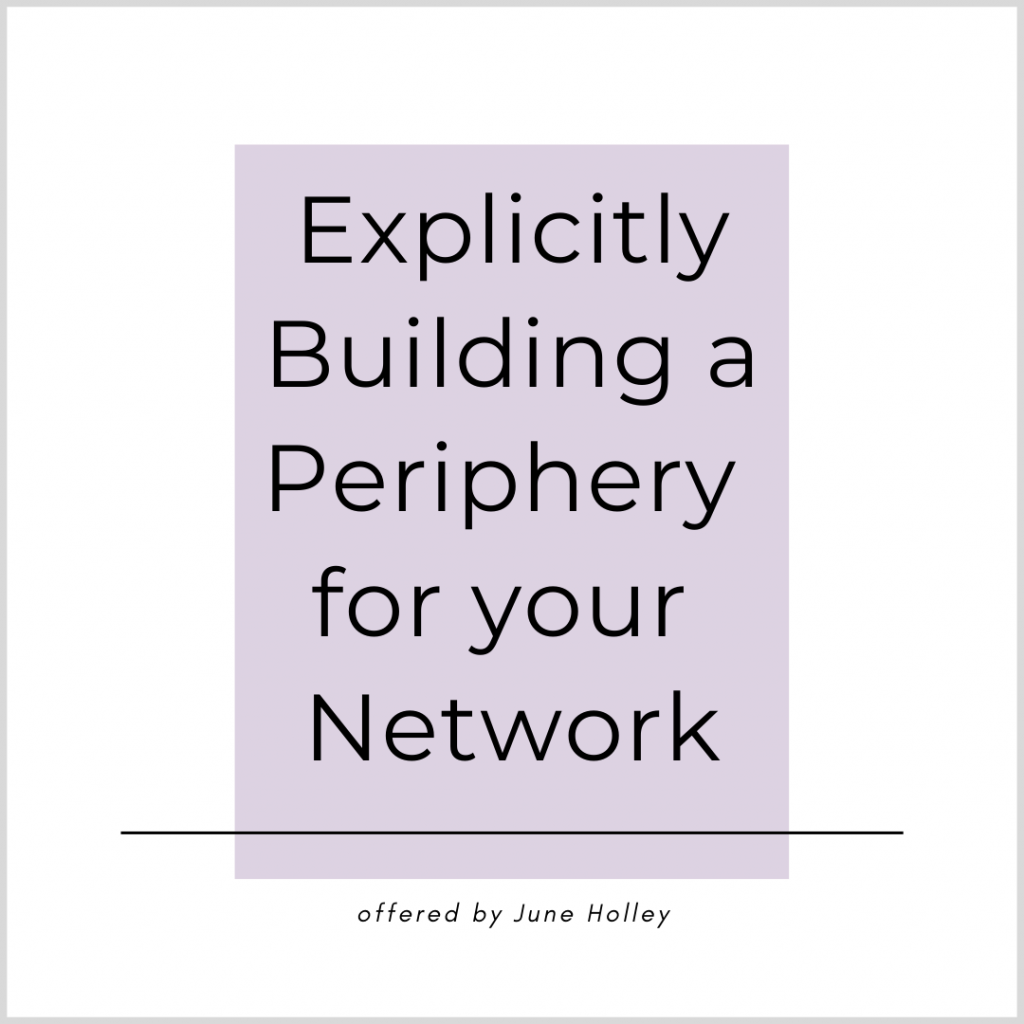
June Holley has been weaving networks, helping others weave networks and writing about networks for over 40 years. She is currently increasing her capacity to capture learning and innovations from the field and sharing what she discovers through blog posts, occasional virtual sessions and a forthcoming book.
featured image found here
2021: deep transformation or shallow change?
2021 is pivotal to creating the future we want. We know that we have less than a decade to address the climate crisis, and that the commitments made this year will determine whether that is possible. We also know that we have an unprecedented opportunity to steer the investments that have been unlocked to deal with COVID-19 recovery in order to shape a different economy. This is the moment in time to work in integrated ways across climate, biodiversity and equality to drive transformational change, and to better prepare ourselves for ongoing disruption. But will we take the opportunity?
Forum for the Future’s Chief Executive, Dr Sally Uren, explores what is needed as the sustainability movement hits a vital inflection point.
As the crushing climate, social and biodiversity crises intensify, and the social, political and economic fallout from COVID-19 continues, the world stands at a crossroads. Will we ultimately capitalise on this opportunity for a reset - using the pandemic recovery to lay the foundations for transformative change capable of creating a just and regenerative future? Or will we continue to address the multiple systemic issues we face with small scale, isolated interventions that fail to address the root causes?
Put more simply: will we sow the seeds of deep transformation or continue with shallow change?
Even before the pandemic, the world was beginning to wake up to the urgency of the challenges we face, and the limited window of opportunity to address them. The shock of the COVID crisis has in some ways deepened that urgency. It has shone a light on how interconnected the challenges we face are - and that solutions must simultaneously address not just the climate emergency, but also growing inequality and habitat and biodiversity loss.
In our Future of Sustainability report published in late 2020, Forum called out four possible trajectories forward from the COVID crisis based on the mindsets we have seen proliferate over the past year. One of those trajectories, the Transform trajectory, offers the potential of a world where both people and planet can thrive into the long-term. It’s here that norms and narratives begin to shift to allow the emergence of a different global economy, one that is rewired to deliver to a set of goals much broader than short-term profit maximisation. An economy where businesses are rewarded for delivering solutions to some of our grand challenges, and where philanthropy channels its billions into solving for systemic challenges, not simply plastering over the relentless shocks that come from our collective failure to reconfigure the systems we rely on.
Since we published our report, there have been promising signals that the Transform trajectory is beginning to emerge. Financial firms responsible for $70 trillion are now signed up to net zero targets, with the real progress manifesting in what we mean by ‘net zero’; the EU for example is pushing for these targets to include a just transition Elsewhere, in a move that caught many off guard, the International Energy Agency (IEA), a traditional supporter of the oil and gas industry, has just called for an end to investment in fossil fuels.
These green shoots of deep change are not just apparent in business. The UNDP is urging investment patterns to change such that capital flows into the root causes of our challenges. This involves ‘reframing’ issues, pointing out that a health system designed to promote wellbeing, for example, would look very different from a system designed to treat ill-health. Meanwhile many philanthropic funders are examining how their own practices need to shift to drive more redistributive and regenerative approaches.
These shifts also coincide with a growing acknowledgment among mainstream civil society that the world can’t go back to where it was before. People are mobilising, marching the streets to call time on long-standing ethical, social and environmental issues that have for too long gone unchecked. Many grassroots movements are driving real changes in attitudes to diversity and inclusion.
Promising, but…
This momentum is both encouraging and tantalising, but there remains a real risk of a shallow transition - one where we address some specific problems and their symptoms in isolation, but fail to tackle the root causes; where we tweak around the edges but don’t fundamentally transform our systems. Why? Because there are other versions of our future that are unfolding alongside Transform, and these versions are predicated on the current version of our economy, where power, profit and success are tilted in the favour of the few.
The Transform trajectory is trying to fight through the boundaries of a set of systems, from food to energy to finance. These systems were established to drive economic growth, without proper and due attention to environmental or social value. They are entrenched and have inherent energy that will keep pulling them back to how they were established. All of us in these systems will feel the forces, economic and societal, to push us back to where we were pre-COVID.
Yet now is the moment to push forward, to overcome any desire to go back to what we knew, to work with the activating voices and organisations for change in our systems, to work with the resisting voices to make the case for change and sweep them along with us. Or to leave them behind. It’s also the moment we must all re-examine our approaches, to dig deep and understand what radical disruption and deep transformation – when seen as a doorway to a new world – could offer us.
What will be required to drive this deep transformation?
At Forum, we are calling for three things:
1. A reset of ambition.
Every great movement has a compelling “north star”. The original north star of sustainability was a world where we live in balance with the planet - where both people and planet can thrive.
While the essence of this vision still holds true, the pathways toward that north star have become confused - firstly by the idea that this vision of sustainability is compatible with an economic model that prioritises infinite growth of consumption and production.
And secondly, by the idea that incremental change - tweaking around the edges of our current systems, or simply doing less bad in the world - will somehow get us there.
We need to redefine what we mean by sustainability, pushing our aspiration further. If we are truly to create the conditions in which people and planet thrive, then we need to start to design for a just and regenerative future, and challenge every actor in our economy and society to examine what their role in creating that future looks like.
And we need to recognise that setting our sights on this new north star will mean shifting from the ‘build back better’ response to the economic and social consequences of COVID-19. Instead, we need to be ‘building forward’ - which means fundamental shifts in both what we define as important, and in the goals of our systems. These goals must move away from the current economic model towards a distributive one that has the principles of social equity and a just transition to a zero-carbon future at its heart.
As we approach the defining moment of the climate COP, set to take place in Glasgow later this year, we should also be looking beyond net-zero, and aspiring to ‘net-zero plus’, with a view to addressing planetary health, social equity and the capacity of all our systems to regenerate and thrive
2. A focus on ensuring just transitions
For us to achieve this bold vision, it is clear that the coming decade will require a suite of fundamental transitions in the key systems on which we rely and that these transitions will not succeed unless they address both social and environmental challenges.
The perceived dichotomy in which we could focus only on one or the other, or through isolated initiatives, never rang true, but COVID-19 has now fully exposed it for the falsity it is. The pandemic has brought into stark focus just how interconnected planetary and human health are, and that one simply cannot thrive without the other.
Our transitions must fundamentally tackle the root causes of the structural inequalities we face and ensure disadvantaged communities are actively involved in shaping the future. In the radical transitions we know need to happen across our energy systems, this will not be exclusively about jobs and retraining, but also about shifting how costs, risks and benefits are shared. And of course, we must recognise that this is not just true for energy systems, but also across our food systems and other commodity supply chains.
At the same time, success will require working across historic silos – the boundaries between, businesses and other organisations, sectors and change-actors must come down. Net zero strategies should not just be about carbon outcomes, but equality and livelihoods
3. Building capacity for systemic and joined-up thinking
For all of this to work, and ensure that the changes we seed now are long-lasting, we need to change the way we approach problems and solutions.
We must invest in building capacity among key influencers and change makers for more systemic approaches to problem solving and collaboration. These approaches must recognise the complexity and inter-relationships within our systems. They must help us to look beyond quick fix solutions and to focus instead on the deep levers of change: our views, our values, our mindsets – and how these need to shift to acknowledge the deep interconnections between planetary health, human health and the health of our economy and society.
This will be the ultimate unlock to driving deeper, lasting change.
An overdue reinvention
I began by presenting a question: deep transformation or shallow change? The choices we make, right now, will determine the trajectory we take, and whether or not Transform becomes the dominant version of our future. At Forum, we believe that a shallow transition is not viable; after all, the ultimate costs of shallow transitions will far outweigh those of deep transformation in the long term. Fundamentally, we cannot thrive on a failing planet.
It’s within our grasp to reinvent the way the world works. We’re long overdue in doing it.
Read more:
- The mindset of a good business leader for an inclusive future
- From pioneering ambition to game-changing goals
- More than words on a placard: how do we take ‘systems change’ from idea to action?
Sally Uren is Chief Executive at Forum for the Future with overall responsibility for delivering Forum’s mission to accelerate a big shift towards a sustainable future by catalysing transformational change in global systems. This involves working with leading global organisations, including businesses such as Olam and Walgreens Boots Alliance, Foundations, such as the Laudes Foundation, and membership organisations, such as the United Nations Global Compact, both in one to one partnerships, and also as part of multi-stakeholder collaborations designed to address complex challenges in systems as diverse as food, energy, apparel and shipping.
Originally published at Forum for the Future
A Dialogue: How Impact & Evaluation are Shifting
A lively dialogue between trailblazers in networks & systems change on how we can re-conceptualize our approach to evaluation & impact
We all know we're doing it wrong. Creating outcomes that don't capture the richness and complexity of the context. Extracting data to report to those who have the most power but the least skin in the game. Trying to predict an unpredictable future.
This session will bring together some great minds to engage in a participatory discussion on how impact evaluation is shifting. We'll look at questions like who is doing the evaluation and why, what data we are and are not collecting, and how the analysis is and isn't being used for the benefit of those who have a stake. We'll also explore how we might start moving from top-down to participatory processes, predictable data to unpredictable outcomes, project-based approaches to systems thinking, and extraction-based assessment to shared learning and action.
The super impressive line-up includes:
- June Holley, Network Weaver
- Glenn Page, SustainaMetrix
- Motaz Attalla, Garfield Foundation
- Charles Kojo Vandyck, West Africa Civil Society Institute
- Gurpreet Singh, Skoll Foundation
- Mark Cabaj, From Here to There
- Liz Weaver, Tamarack Institute
- Habiba Nabatu, Lankelly Chase Foundation
Hosted & facilitated by Brendon Johnson, inHive
Wed, November 10, 2021
11:00 AM – 12:00 PM EST
REGISTER HERE
Energy Network Literacy: On Care-full Dis-Connection, Dis-Entanglement and Regenerative Flow Management
“i think of movements as intentional worlds, or perhaps more accurately as worlds designed by and for intentional people, those who are able to feel the world not as an unfolding accident of random occurrences, but rather as a massive weaving of intention. you can be tossed about, you can follow someone else’s pattern, or you can intentionally begin to weave and shape existence. and yes, the makeup of your web is the same matter as all that already exists, but your direction and pattern can be new, unexpected, agitating new growth. what results from your efforts depends on your intention.”
– adrienne maree brown
I recently returned from a week-long vacation with family to the so-called Northeast Kingdom of Vermont, and a particular location that is deeply nourishing and meaningful for its landscape, its link to family history on my wife’s side and (perhaps for these times) an unusual sense of community. I count myself privileged to have had the time and the opportunity to be in that place with those loving people, with that sense of multi-generational connection.
Heading back “home,” I could feel the tension mounting as my wife and I talked about re-entry. Before thought, my body tightened in anticipation of the return to the mundane daily tasks, to-do lists and un-answered emails/phone messages. The morning after our return, I somewhat absent-mindedly dipped toes into social media and felt my blood pressure rise. “What am I doing?” I wondered, even as I continued to wade in, pulled by questions about what happened while we were away and what new opportunities might be presenting themselves – FOMO (“fear of missing out”) in full effect. When I closed the laptop, perhaps 30 minutes later, I was aware of my stiff neck, shallow breathing, hunched shoulders, and whirling brain. Saved by a 12 year old daughter almost yelling, “Dad, c’mon, let’s get outside and play ball!”
As much of a proponent as I am of collaboration and networks, I am struck by how I can get a bit caught in the approach/avoid loop of connection, and mired in questions of “How to connect?” and “How much is enough connection?” and “What kinds of connection do I really need?” As I engage with others, I realize that these are pretty fundamental ponderings for navigating a more viscerally entangled world.
“When our ancestors spoke about a web of life, they were describing what Western science calls quantum entanglement. They understood that we all originated from the same seed of life, and when that seed exploded and carried life across our universe, we remained connected. Quantum entanglement tells us that any matter once connected physically can never be disconnected energetically (or spiritually).”
– Sherri Mitchell (Weh’na Ha’mu’ Kwasset, “She Who Brings Light)

More and more is being written, spoken and (re)-presented about the fundamentally interconnected nature of our lives, and of Life writ large. In a beautiful essay in Emergence Magazine (“When You Meet the Monster, Anoint Its Feet”) , which weaves connections between climate change, race, racism, evolutionary biology, ecology, myth and narrative, Bayo Akomolafe offers …
“Perhaps most important about this time is that the image of the human is being composted—or, we are experiencing great difficulty determining where the nonhuman stops and the human begins. Everything touches everything else in the Anthropocene—an observation that is supported by, say, current thinking about ‘holobionts,’ assemblages of bodies within bodies within bodies, or intersecting communities that toss out notions of separable individuality. We are holobionts. We live and are lived through; we are composite beings, companion species, emerging within and among assemblages.”
And, as Akomolafe later shares from his indigenous and experiential knowledge, bodies and beings transcend time. More recent research into intergenerational trauma (see the work of Resmaa Menakam and Thomas Hubl) shows that our bodies indeed know the score, not only of our own individual pain, but the suffering passed through our ancestral lines. Husband and wife, and astrophysicist and physician, team Karel and Iris Schriyver, in their book “Living With the Stars,” add that our bodies are always in dynamic exchange with … the wider universe! Our cells die and are replaced by new ones, renewing our entire biological makeup, using food and water as both fuel and construction material. This rebuilding happens by using elements captured in our surroundings and cycled through geological processes, all extensions of galactic explosions and ripples and atoms that formed through collisions with our planet’s atmosphere eons ago.
We are entangled in a multiplicity of ways, containing and residing within multi-dimensional multi-scalar multitudes. I find this simultaneously liberating, dizzying, humbling and dumbfounding. Knowing that everything is interconnected can inspire a profound sense of belonging and ease, yes, and sometimes it can make it a bit hard for me to plan or get through the day!
And so here we are, exquisitely entwined, and yet also individuals, or at least bounded organisms with a sense of individuality, of distinction, of the need to preserve the integrity and dignity of something called “me” or “self.” And the question of these times would appear to be how we can honor a healthy sense of self/individual, whole communities, and Life, all at once.
“To allow oneself to be carried away by a multitude of conflicting concerns, to surrender to too many demands, to commit oneself to too many projects, to want to help everyone in everything, is to succumb to violence. The frenzy of our activity neutralizes our work for peace. It destroys our own inner capacity for peace. It destroys the fruitfulness of our own work, because it kills the root of inner wisdom which makes work fruitful.”
– Thomas Merton
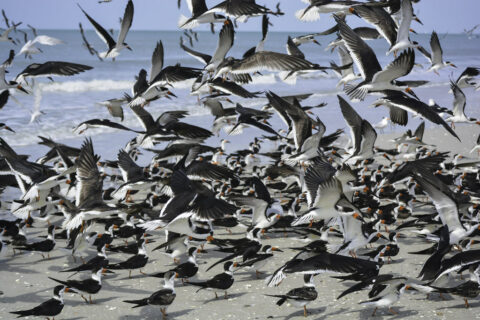
While there have been understandable and important pushes to get beyond the individualistic and atomistic view, I have the feeling that some of this emphasis, as with all pendulum swings, can go a bit too far. Seeing the world as profoundly interconnected might drive a strong desire to reclaim a kind of forgotten birthright, and in my experience, it can also result in getting lost, especially if it is guided by an underlying desire to fully understand, grasp and/or control it all (colonial mindset?). Or if that drive is purely to belong to something, anything, no matter its underlying values, to spare the pain of felt/perceived separation.
A certain view in contemporary physics holds that the world, the universe, is entirely made up of an infinite amount of information, a vast expanse of sensory inputs that all taken together would be utterly overwhelming to our individual apparatus. And so we have our human senses as filters to sift through, make sense and identify/assemble what is most … useful, interesting, advantageous. The point is, there is always more than meets (or at least is taken in by) our eyes, ears, nose, tastebuds, touch, etc. This calls to mind the ladder of inference, a framework we teach at IISC that helps people remember that we are often recycling conclusions we have drawn from a very partial understanding of reality, and that it might behoove us to expand our “view” to reach more helpful (just, prosocial, sustainable) conclusions and actions.
That said, simply taking in more, or making more connections, may not lead to a better place, if it results in overwhelming nervous systems. So it seems there is a balancing act here. Just as we often can’t do something new without letting go of something old, there is a need to modulate what one takes in – news, ideas, people, and possibilities. Connection and flow management. Energetic discernment. Intentional dis-connection and dis-entanglement.
What might this look like in this networks upon networks networked world? A few thoughts …
“Between you and me, now there is a line. No other line feels more certain than that one. Sometimes it seems not a line but a canyon, a yawning empty space, across which I cannot reach.
“Yet you keep reappearing in my awareness. Even when you are far away, something of you surfaces constantly in my wandering thoughts. When you are nearby, I feel your presence, I sense your mood. Even when I try not to. Especially when I try not to. . . .”
– Donella Meadows
In a previous post, I shared some of the wisdom of network science as taught by Danielle Varda and colleagues at Visible Networks Lab. They make the point that when it comes to creating strong (resilient and regenerative) networks, more can be less in terms of the connections a person has. Connectivity and related flows can be ruled by a relentless growth imperative(capitalism?)that is not strategic or sustainable. More connections require more energy to manage, meaning there may ultimately be fewer substantive ties if one is spread too thin. Instead, the invitation is to think about how to mindfully maintain a certain number of manageable and enriching strong and weak ties, and think in terms of “structural holes.” For more on this social network science view, visit this VNL blog post “We want to let you in on a network science secret – better networking is less networking.”
Over the last several years, I have been playing with a set of about a dozen principles (give or take) for network thinking and action. One that seems quite helpful here is the saying, “Do what you do best and connect to the rest.” As ecosystems become more robust and complex, individual participants are invited to carve out more specific niches, and be oriented towards synergistic and supportive relationships with others. In other words – stop trying to do it all, or connect to it all! It’s not possible, it can create unnecessary competition, overwhelm and inhibit “collaborative efficiencies.” This also aligns with a metric of energy network and systems science (see below), which focuses on the importance of a diversity of roles in healthy living systems. Share and spread the wealth!
As just alluded to, the emerging field of “energy systems science” points to a number of different factors or indicators that contribute to long-term living system (including human systems) health and thriving. Four of these indicators fall under the heading of “measures of flow.” Thinking about how these apply to our own and/or collective in-take and sharing of information/energy might be helpful for knowing what is “sufficient:”
- Robust cross-scale circulation: How rapidly (too fast?/too slow?) and well do a variety of resources reach all parts of an individual/social body?
- Regenerative return flows: To what extent does the individual/social body recycle resources into building and maintaining its internal capacities? Is there too little (depletion)? Is there excess (hoarding)?
- Reliable inputs: How much risk and uncertainty is there for critical (health promoting) resources upon which the individual/social body depends?
- Healthy outflows: What impacts do the individual/social body’s outflows have externally?
On a more personal tip, I have been married for almost 20 years. What has perhaps been one marriage from the outsider’s perspective has been many from the inside, as other long-standing intimate partners can surely appreciate. We have learned and grown over the years. One important lesson has been knowing when we are too enmeshed and need to separate for some time. There is a point of diminishing returns in many of our heated discussions/ arguments, and if we do not dis-entangle or dis-connect, we have learned, we can do damage to the relationship.
Along the same lines, two of our daughters are identical twins, now twelve-years old. What we have observed about them is what we have heard about many twins – they are truly uniquely connected. There are many times when we quietly watch with fascination as they, seated on opposite ends of the room, engage in similar gestures (scratching their heads with the same hand at the same time, for example) seemingly without direct awareness. Quantum entanglement in full effect! And they can get themselves enmeshed at times and in ways that drive each of them, and the entire family system, to the edge. They are learning that they need and how to differentiate and take space, even as they have a natural gravitational pull to their other half.
Knowing when to create a bit of a boundary (what Buckminster Fuller once called, “a useful bit of fiction”), a separate amniotic sack if you will, and when it is optimal to connect more fully often requires attention and discernment, for all kinds of relationships.
“Beware of the stories you read or tell; subtly, at night, beneath the waters of consciousness, they are altering your world.”
– Ben Okri
The movie The Social Dilemma and the work of Douglas Ruskhoff (see Team Human) both point to the perils of getting caught up in our increasingly socially mediatized world. The algorithms behind these powerful tools are designed to capture our attention, pressing our buttons oriented towards hedonism (“likes”) and fear/outrage. A recent article in The Atlantic Monthly (“You Really Need to Quit Twitter”) points to how difficult it can be to break this habit. This is not to say that these tools are inherently bad or evil. They are certainly formidable, and require considerable attention and intention. Social media fasts and limited dips can help, as well as being mindful about what and why we are both sharing and consuming (see this other recent post for some considerations on this – The Wisdom of W.A.I.T.ing: Mindful Sharing in a Network Age.
If dis-engagement is not an option or ideal, there are a number of practices I have been learning and using that can help to manage energy exchanges, both in-person and virtual:
- From the Rockwood Leadership Program, I learned the practice of imagining that my body is like meshwork (think a fishing net), when something intense is coming at me, so that it can pass through me, and I don’t use too much energy resisting or having it get stuck in my body/psyche.
- From a couple of local trauma therapist who focuses on racialized trauma, I have learned the practice of using imaginative “shields” (in my mind’s eye) on the outside and inside of my body, to allow for energy coming in or going out. Silver shields on the exterior repel unwanted energy, and on the inside they keep precious energy in. Grey shields allow some energy in or out.
- From a number of practitioners, I have learned the practice of slowing my breath to manage energy flow, in-take and circulation.
- From Qigong Master Robert Peng I have learned how to use a “circuit breaker” for the life force (or “chi”) moving through me by enclosing my thumbs with the fingers on each hand, which can diminish intense energy flows when engaged with others.
- From The Weston Network/Respectful Confrontation community, I have learned the practice of being aware of my own personal space, surrounding my body, and respecting that boundary when engaged with others.
- Also from The Weston Network, I have learned about the practice of embodied energetic balance when reaching out to make contact with others, while not over-extending, and also maintaining a firm sense of grounding and dynamic flexibility. I have also been reminded, helpfully, that balance is never static. We are constantly in motion, if we are alive, and when “most balanced,” are actually able to recover quickly from being extended or engaged in some way. So a question to carry is “What supports my ongoing ability to recover?”
- From Harold Jarche, I have learned many ways of managing personal knowledge development through mindful connection to different networks in ways that ideally make them all “smarter” and don’t simply ask them/me/us to work “harder.” Of particular help is knowing what one can reasonably expect in terms of energetic flow and return from work teams versus communities of practice versus one’s wider social networks (see image above).
- Especially in work that may be emotionally challenging and draining, I have learned from both Acceptance and Commitment Therapy/Training, as well as teacher Tara Brach, the idea of “tending and befriending” otherwise unwelcome feelings that inevitably come up, so that rigid resistance does not make those emotional visitors stronger.
- And in general, I am embracing and making space for more silence, solitude and stillness, challenging some of my deep seated anxieties about losing connection and a sense of belonging in the world (what some would say FOMO is really about – for more about this, see this informative talk by Tara Brach).
And there are SO MANY teachers out there and much wisdom to glean that I certainly welcome others to share! It is my hope that many more of us can become adept energy and flow scientists/artists/healers/workers as we intentionally weave patterns that are the basis of the better world we sense is possible and know is necessary.
“The point of solitude is to give yourself time to grow in your own way, while the ultimate goal remains the difficult task of love and connection.”
– Damion Searls (from the introduction to a new translation of Rainer Maria Rilke’s Letters to a Young Poet)
oringially published at Interaction Institute for Social Change
Curtis Ogden is a Senior Associate at the Interaction Institute for Social Change (IISC). Much of his work entails consulting with multi-stakeholder networks to strengthen and transform food, education, public health, and economic systems at local, state, regional, and national levels. He has worked with networks to launch and evolve through various stages of development.
The Web of Change
Creating Impact Through Networks
The following post is excerpted from the introduction of Impact Networks: Create Connection, Spark Collaboration, and Catalyze Systemic Change, now available in print, as an audiobook, and as an ebook.
“We are caught in an inescapable network of mutuality, tied in a single garment of destiny. Whatever affects one directly, affects all indirectly.”
— Martin Luther King Jr., Letter from a Birmingham Jail
Since the beginning of our species, humans have formed networks. Our social networks grow whenever we introduce our friends to each other, when we move to a new town, or when we congregate around a shared set of beliefs. Social networks have shaped the course of history. Historian Niall Ferguson has noted that many of the biggest changes in history were catalyzed by networks—in part, because networks have been shown to be more creative and adaptable than hierarchical systems.[1]
Ferguson goes on to assert that “the problem is that networks are not easily directed towards a common objective. . . . Networks may be spontaneously creative but they are not strategic.”[2] This is where we disagree. While networks are not inherently strategic, they can be designed to be strategic.
When deliberately cultivated, networks can forge connections across divides, spread information and learning, and spark collaborative action. As a result, they can “address sprawling issues in ways that no individual organization can, working toward innovative solutions that are able to scale,” write Anna Muoio and Kaitlin Terry Canver of Monitor Institute by Deloitte.[3] Networks can be powerful vehicles for creating change.
Of course, networks can have positive as well as negative effects. Economic inequality and the advantages and disadvantages of social class, race, ethnicity, gender, and other aspects of individual identity are in large part the result of network effects: certain types of people form bonds that increase their social capital, typically at significant social expense to those in other groups. Much of the world has become acutely aware of the harmful network effects arising from social media and the internet. This includes the proliferation of online echo chambers that feed people what they want to hear, even when it means rapidly spreading misinformation.
In our globally connected and interdependent society, it is imperative that we understand the network dynamics that influence our lives so that we can create new networks to foster a more resilient and equitable world. The choice in front of us is clear: either we can let networks form according to existing social, political, and economic patterns, which will likely leave us with more of the same inequities and destructive behaviors, or we can deliberately and strategically catalyze new networks to transform the systems in which we live and work.
A case in point is the RE-AMP Network, a collection of more than 140 organizations and foundations working across sectors to equitably eliminate greenhouse gas emissions across nine mid- western states by 2050. From the time it was formed in 2015, RE-AMP has helped retire more than 150 coal plants, implement rigorous renewable energy and transportation standards, and re-grant over $25 million to support strategic climate action in the Midwest. RE-AMP’s work is necessary in part because other powerful networks are also at play to maintain the status quo or to enrich the forces that profit from pollution and inequality.
We can look to the field of education for another example of a network creating significant impact. 100Kin10 is a massive collaborative effort that is bringing together more than three hundred academic institutions, nonprofits, foundations, businesses, and government agencies to train and support one hundred thousand science, technology, engineering, and math (STEM) teachers across the United States in ten years. Founded in 2011, 100Kin10 is well on track to achieve its ambitious goal and has expanded its aim to take on the longer-term systemic challenges in STEM education.
The Justice in Motion Defender Network is a collection of human rights defenders and organizations in Mexico, Guatemala, Honduras, El Salvador, and Nicaragua that have joined together to help migrants quickly obtain legal assistance across borders. Throughout the ongoing family separation crisis created by US immigration policies during the Trump administration, this network has been essential in locating deported parents in remote regions of Central America and coordinating reunification with their children.
Or consider a network whose impact spans the globe, the Clean Electronics Production Network (CEPN). CEPN brings together many of the world’s top technology suppliers and brands with labor and environmental advocates, governments, and other leading experts to move toward elimination of workers’ exposure to toxic chemicals in electronics production. Since forming in 2016, the network has defined shared commitments, developed tools and resources for reducing workers’ exposure to toxic chemicals, and standardized the process of collecting data on chemical use.
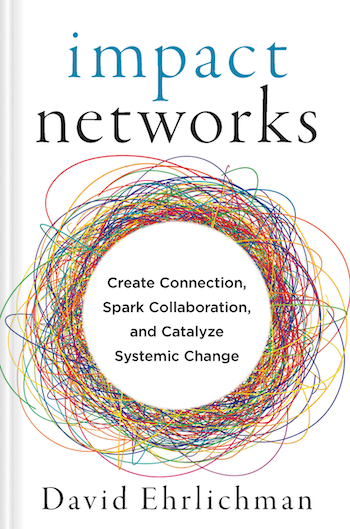
Networks like RE-AMP, 100Kin10, the Defender Network, and CEPN—along with many others you will learn about in this book—were not spontaneous or accidental; rather, they were formed with clear intent. These networks deliberately connect people and organizations together to promote learning and action on an issue of common concern. We call them impact networks to highlight their intentional design and purposeful focus, and to contrast them with the organic networks formed as part of our social lives.[4]
We think of impact networks as a combination of a vibrant community and a healthy organization. At the core they are relational, yet they are also structured. They are creative, and they are also strategic. Impact networks build on the life force of community—shared principles, resilience, self-organization, and trust— while leveraging the advantages of an effective organization, including a common aim, an operational backbone, and a bias for action. Through this unique blend of qualities, impact networks increase the flow of information, reduce waste, and align strategies across entire systems—all while liberating the energy of multiple actors operating at a variety of scales.
All around the world, impact networks are being cultivated to address complex issues in the fields of health care, education, science, technology, the environment, economic justice, the arts, human rights, and others. They mark an evolution in the way humans are organizing to create meaningful change.
To learn more about what impact networks are, how they work, and what it takes to cultivate and sustain them, check out the new book Impact Networks: Create Connection, Spark Collaboration, and Catalyze Systemic Change.
[1]: Niall Ferguson, The Square and the Tower: Networks, Hierarchies and the Struggle for Global Power (London: Penguin Books, 2018), xix.
[2]: Ferguson, The Square and the Tower, 43.
[3]: Anna Muoio and Kaitlin Terry Canver, Shifting a System, Monitor Institute by Deloitte, accessed December 17, 2020, https://www2.deloitte.com /content/dam/insights/us/articles/5139_shifting-a-system/DI_ Reimagining-learning.pdf.
[4]: June Holley has called them “intentional networks” in Network Weaver Handbook: A Guide to Transformational Networks (Athens, Ohio: Network Weaver Publishing, 2012). Peter Plastrik, Madeleine Taylor, and John Cleveland have called them “generative social impact networks” in Connecting to Change the World: Harnessing the Power of Networks for Social Impact (Washington, DC: Island Press, 2014).
Originally published at Converge
David Ehrlichman is a catalyst and coordinator of Converge and author of Impact Networks: Create Connection, Spark Collaboration, and Catalyze Systemic Change. With his colleagues, he has supported the development of dozens of impact networks in a variety of fields, and has worked as a network coordinator for the Santa Cruz Mountains Stewardship Network, Sterling Network NYC, and the Fresno New Leadership Network. He speaks and writes frequently on networks, finds serenity in music, and is completely mesmerized by his newborn daughter.ehrlichman@converge.net
Rising Through Resilience: Dr Froswa’ Booker-Drew On The Five Things You Can Do To Become More Resilient
Watch your thinking. One of my favorite quotes is “Watch your thoughts, for they become words. Watch your words, for they become actions. Watch your actions, for they become habits.” Everything starts as a thought. Pay attention to what you think about yourself and the situations you face. It can determine your results/outcome.
Resilience has been described as the ability to withstand adversity and bounce back from difficult life events. Times are not easy now. How do we develop greater resilience to withstand the challenges that keep being thrown at us? In this interview series, we are talking to mental health experts, authors, resilience experts, coaches, and business leaders who can talk about how we can develop greater resilience to improve our lives.
As a part of this series, I had the pleasure of interviewing Dr. Froswa’ Booker-Drew.
Froswa’ Booker-Drew, Ph.D. is a Network Weaver who believes relationships are the key to our personal, professional and organizational growth. She has been quoted in Forbes, Ozy, Bustle, Huffington Post, Modern Luxury, and other media outlets, due to an extensive background in leadership, nonprofit management, philanthropy, partnership development, training, and education. Froswa’ graduated with a PhD from Antioch University in Leadership and Change with a focus on social capital, diverse women, change management, and relational leadership. She is the host of the podcast, The Tapestry and author of 3 workbooks for women, Fly Away, Ready for a Revolution: 30 Days to Jolt Your Life and Rules of Engagement: Making Connections Last.
Thank you so much for joining us! Our readers would love to get to know you a bit better. Can you tell us a bit about your backstory?
Iserve as Vice President of Community Affairs for the State Fair of Texas. I am responsible for our philanthropic giving, community initiatives and partnerships and some of our educational programming. I am also the co-founder of HERitage Giving Circle and Power in Action, two amazing organizations focused on giving in the Black community of North Texas. Lastly, I’m an adjunct professor at Tulane University and a research affiliate at Antioch University. I am also an author of three books and finalizing a fourth.
Can you share with us the most interesting story from your career? Can you tell us what lessons or ‘take aways’ you learned from that?
I remember very young in my career having a boss that I looked up to and wanted to emulate. She was brilliant, well-respected, and gifted. I spent a lot of time with her due to the long hours of the position. Our families even spent time with one another. As I began to thrive in the work and began to receive recognition for the work, she changed. I moved from a brainstorming partner to being micromanaged and criticized for everything. Sadly, her superiors even commented on the unfair treatment I received but they did nothing to address the mistreatment. I finally decided to walk away because the toxicity was overwhelming and while others were afraid of her and chose not to cross her, I left on faith to start my own business. I learned several lessons. Sometimes difficult experiences occur to show you what you are made of, but they also can serve as a catalyst to push you from comfort to creating your destiny.
What do you think makes your company stand out? Can you share a story?
I’m fortunate to work for the biggest and best State Fair in the country! The State Fair of Texas in twenty-four days not only has more than 2 million visitors but the event supports my work to providing funding to nonprofits in the local area (so proud of how we are changing the narrative in philanthropy), our signature programming that includes building the capacity of nonprofits and businesses in our area, and supporting initiatives in our area that impact education, social justice, economic development, or nonprofit growth. I don’t think people are aware of the many things we do outside of the event year-round which is unique for the industry. In addition to my work at the State Fair of Texas, I am an author and I speak at a variety of events. I also provide training and consulting to a limited number of organizations. I think what makes my work unique is the decades combined of education and experience that contributes to my ability to understand organizational culture, community development, philanthropy, and DEI.
None of us are able to achieve success without some help along the way. Is there a particular person who you are grateful towards who helped get you to where you are? Can you share a story?
I am forever grateful to my mother. My mother endured a lot of hardships and loss. She instilled in me the importance of an education but also the importance of pursuing your dreams. She has been my biggest cheerleader and when I forget who I am, she reminds of not just what I’ve accomplished but the endless possibilities that exist within me. It’s a gift to have a mother that you adore but one who is also your friend and confidante.
Ok thank you for all that. Now let’s shift to the main focus of this interview. We would like to explore and flesh out the trait of resilience. How would you define resilience? What do you believe are the characteristics or traits of resilient people?
Resilience is the ability to bounce back after difficult situations. I think resilient people are courageous and determined. I think at times, we practice resiliency without necessarily equating our actions with being resilient. For many of us, we do what we must because the situation requires it. In some circumstances, we have limited choices, and we choose to push through it because the other options are either limited or non-existent.
Courage is often likened to resilience. In your opinion how is courage both similar and different to resilience?
I think it is important to note that although resilience requires the ability to push through situations, sometimes, we are pushing through because our choices don’t allow for anything else. Resilience is important but I don’t think we talk enough about trauma and that many of us are pushing through very difficult situations without acknowledging the scars that we’ve endured to get through. I’ve heard resilience compared to a fork being bent out of shape only to resort to its original state. Yet, depending on the intensity of the bend, is the fork ever back to its normal state? I think the same can be said about many of us — we bounce back but the bend is so deeply now a part of our consciousness. We aren’t the same, we’ve just persevered and moved on. Is it really courageous or a commitment to doing something we must do even when it doesn’t feel good?
When you think of resilience, which person comes to mind? Can you explain why you chose that person?
Simone Biles is a person that epitomizes resilience. Here is a young woman who smiled and performed in the midst of a traumatic experience that was ignored and yet, was expected by the public to continue to put her body through such intensity while she struggled both mentally and physically. She decided to step back and take care of herself despite the unsolicited comments from others who knew nothing about what she went through, and she placed her needs first. I think she exemplifies that for many of us, we continue to bounce back despite the need to stop, slow, down and process our pain instead of always pushing through. That’s resilience as well.
Has there ever been a time that someone told you something was impossible, but you did it anyway? Can you share the story with us?
I remember in high school meeting with my guidance counselor to sign up for Latin. She told me that “you people don’t take Latin”. What could have easily served as discouragement, I laughed and told her that I was one of those people who would take Latin. I took Latin in High School and was a few hours from a minor in it in college. I didn’t allow her racism or thoughts about me to stop me from doing something I knew I could do. I also recognize that everyone doesn’t do this. There are so many obstacles and barriers and after repeated blocks, it’s easy to get frustrated, give up and get discouraged. It has nothing to do with weakness. I think we all have our breaking points and it’s imperative to understand that what works for me may not apply for you. We can all learn from one another, but we must be aware that our experiences, upbringing, and other factors can impact our ability to bounce back.
Did you have a time in your life where you had one of your greatest setbacks, but you bounced back from it stronger than ever? Can you share that story with us?
There have been a lot of setbacks. I remember applying to a college that I really wanted to go to, and I didn’t get in or applying for a job that I wanted, and it didn’t work out. Those situations can be devastating. The college that said no actually did me favor. I ultimately attended the University of Texas at Arlington which opened so many doors for me to build my leadership and relational skills. At the time, I thought the ‘no’ was the end of the world but actually became the beginning of something special that changed my life for the best.
How have you cultivated resilience throughout your life? Did you have any experiences growing up that have contributed to building your resiliency? Can you share a story?
In February 2021, in Texas, we experienced Snowmaggedon. I moved in with a friend after the heat in my home dropped down into the 30s due to a loss of electricity. I recognize that other parts of the country are prepared for this type of weather, but we were not since cold weather doesn’t really last very long and we typically have heat when it does. I was so grateful for my friend’s hospitality and even while I was there, I was terrified of the same thing happening at her home and the possibility of moving again. This was difficult at a time when very few people had vaccines and we were still understanding COVID’s impact. After four days of this experience, we all went back to work the following Monday as if nothing happened. Some would call it resilience. I thought it was insane. Part of resilience is the ability to reflect and lament. I’ve learned that many times that we practice resilience are often a result of traumatic experiences. Moving on is expected and yet, we must take the time to process our pain and remember. It’s important to mourn because of what we experienced. That’s a lesson I’ve embraced not just during Snowmaggedon but throughout my life. We need to give ourselves the space to do this which can help us build our resiliency. It’s more than moving on. It’s really about learning and healing, too, as a part of the process.
Resilience is like a muscle that can be strengthened. In your opinion, what are 5 steps that someone can take to become more resilient? Please share a story or an example for each.
- Create the space to reflect from the lessons. Processing is important. Otherwise, it isn’t resilience anymore. It’s doing the same thing over and over without learning.
- You need a support system that reminds you of who you are. In the midst of challenges, it’s easy to have a warped sense of who you are. Having folks remind you of what’s in you is necessary.
- Bet on you. Challenges will come. Trauma isn’t always avoidable but what you can do is make sure that you always believe in yourself and your abilities.
- Recognize the traumas that you endure. I think as a society, we are so determined to move through situations and just as muscles need time for recovery to be stronger, you must know when to pause or even stop to heal before moving forward.
- Watch your thinking. One of my favorite quotes is “Watch your thoughts, for they become words. Watch your words, for they become actions. Watch your actions, for they become habits.” Everything starts as a thought. Pay attention to what you think about yourself and the situations you face. It can determine your results/outcome.
You are a person of great influence. If you could inspire a movement that would bring the most amount of good to the most amount of people, what would that be? You never know what your idea can trigger. :-)
I would love to help people understand the power of social capital. My dissertation research is about the importance of building relationships and the role of change. In an environment that has a lot of polarization, I would love to bring groups together to understand the power of their narratives and their identities to create the change we’d like to see in our world.
We are blessed that some very prominent leaders read this column. Is there a person in the world, or in the US with whom you would love to have a private breakfast or lunch with, and why? He or she might just see this, especially if we tag them :-)
I would love to meet Oprah Winfrey to learn from her brilliance and journey; Brene Brown because of her research, and Reid Tracy, the CEO of Hay House because I’d love to work with him.
How can our readers further follow your work online?
Check me out on LinkedIn, Instagram (@DrFroswa) or Twitter (@Froswa)
This was very inspiring. Thank you so much for joining us!
About Savio P. Clemente
Stage 3 Cancer Survivor, Podcaster, Writer, Founder of The Human Resolve LLC, & Board Certified Wellness Coach (NBC-HWC, ACC)
originally published at Rising Through Resilience
Featured image found HERE

